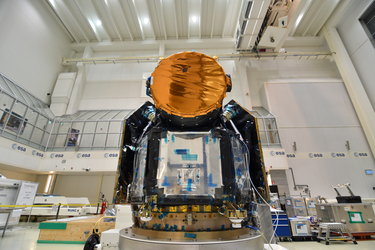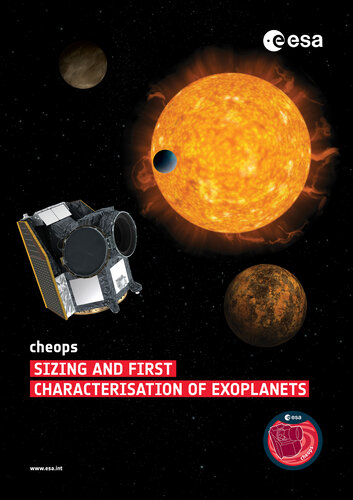Science operations
Operating Cheops, and the planning of and executing science operations, is divided across many European centres, reflecting the collaborative nature of this mission.
The Consortium science operations centre is located at the University of Geneva, and is responsible for the processing, archiving and distribution of science data. Planning of observations is also carried out there, using mission planning software developed in Portugal, and then communicated to the mission operations centre where commands are uplinked and data downlinked via ground station antennas at Villafranca and Torrejon (Spain). During early mission operations, Cheops also made use of the ESA ground station located at Kiruna (Sweden).

Up to 10% of each year is reserved for activities to monitor the satellite’s performance and fix any problems. Observations of a list of exoplanet targets defined by the Cheops Science Team – scientists associated with the institutes within the Cheops mission Consortium – accounts for 80% of the science observing time. The remaining 20% is available to scientists worldwide, who may apply to use Cheops through the ESA-run Guest Observers Programme. Proposals will be selected by an independent committee based on scientific merit and the applicability of Cheops, thus enabling the community at large to capitalise on the unique capabilities of Cheops throughout the mission. All data will be made public through the Cheops archive after a proprietary period.
First the raw data from the satellite is processed into usable science data by the Consortium. For example, software from Switzerland is used to ‘unpack’ the data that arrives from the ground station, while France is responsible for the software that automatically processes the raw data, with contributions from Portugal. Processed data is stored in an archive that was also developed in Portugal, with a backup archive hosted by Italy.
The UK is providing ‘quick look’ software for checking instrument health, while Switzerland has developed software to simulate the behaviour of the instrument in orbit. Sweden has developed software to package data generated by the simulator, which can then be processed in the same way as real spacecraft data and used for testing.















 Germany
Germany
 Austria
Austria
 Belgium
Belgium
 Denmark
Denmark
 Spain
Spain
 Estonia
Estonia
 Finland
Finland
 France
France
 Greece
Greece
 Hungary
Hungary
 Ireland
Ireland
 Italy
Italy
 Luxembourg
Luxembourg
 Norway
Norway
 The Netherlands
The Netherlands
 Poland
Poland
 Portugal
Portugal
 Czechia
Czechia
 Romania
Romania
 United Kingdom
United Kingdom
 Slovenia
Slovenia
 Sweden
Sweden
 Switzerland
Switzerland































